Christian Schellenberger
Rheinland-Pfälzische Technische Universität Kaiserslautern-Landau
Leveraging 5G private networks, UAVs and robots to detect and combat broad-leaved dock (Rumex obtusifolius) in feed production
Apr 30, 2023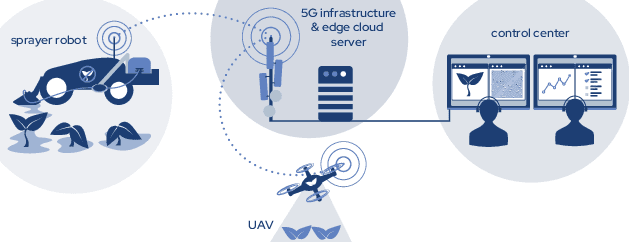
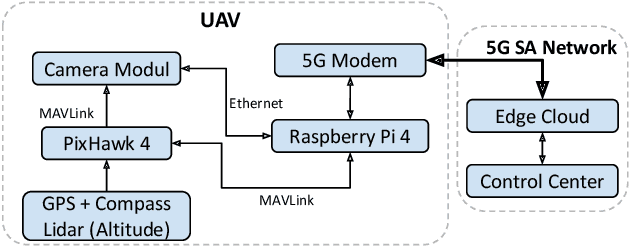
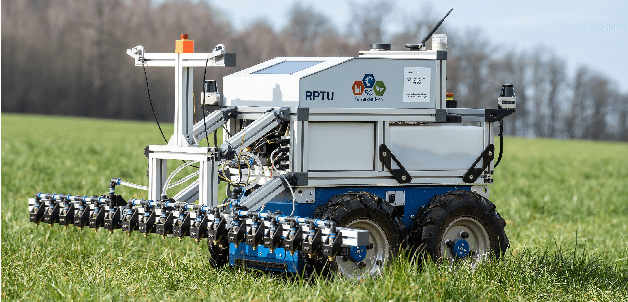
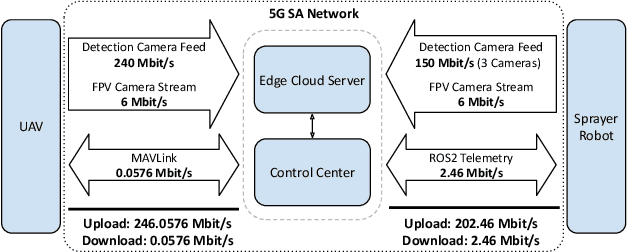
Abstract:In this paper an autonomous system to detect and combat Rumex obtusifolius leveraging autonomous unmanned aerial vehicles (UAV), small autonomous sprayer robots and 5G SA connectivity is presented. Rumex obtusifolius is a plant found on grassland that drains nutrients from surrounding plants and has lower nutritive value than the surrounding grass. High concentrations of it have to be combated in order to use the grass as feed for livestock. One or more UAV are controlled through 5G to survey the current working area and send back high-definition photos of the ground to an edge cloud server. There an AI algorithm using neural networks detects the Rumex obtusifolius and calculates its position using the UAVs position data. When plants are detected an optimal path is calculated and sent via 5G to the sprayer robot to get to them in minimal time. It will then move to the position of the broad-leafed dock and use an on-board camera and the edge cloud to verify the position of the plant and precisely spray crop protection only where the target plant is. The spraying robot and UAV are already operational, the training of the detection algorithm is still ongoing. The described system is being tested with a fixed private 5G SA network and a nomadic 5G SA network as public cellular networks are not performant enough in regards to low latency and upload bandwidth.
Enabling Communication Technologies for Automated Unmanned Vehicles in Industry 4.0
Nov 29, 2018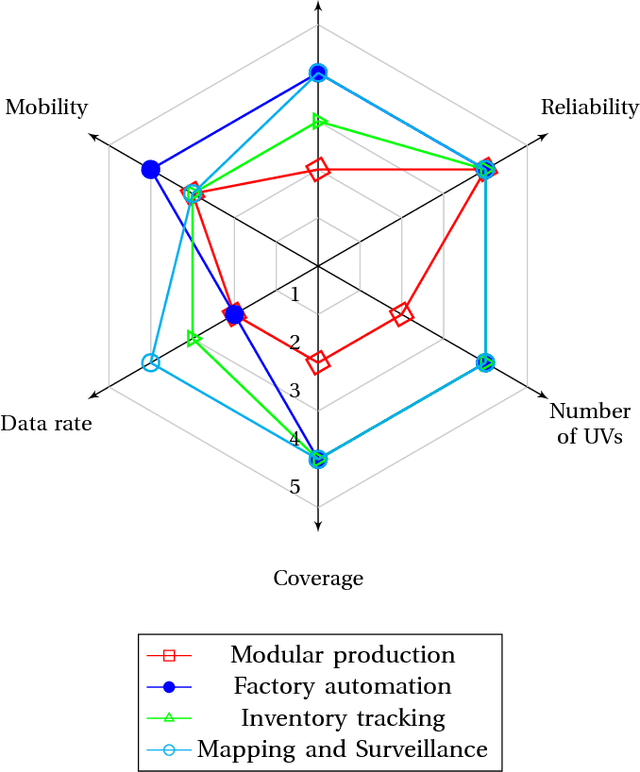
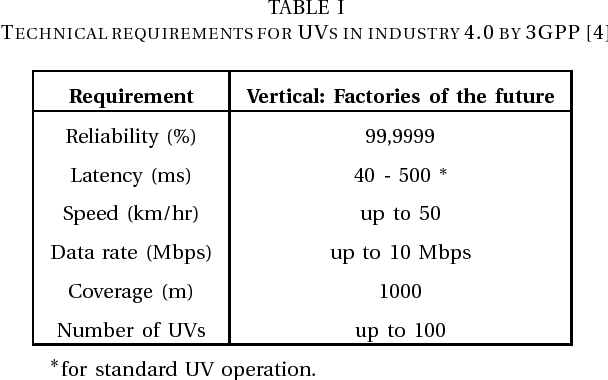
Abstract:Within the context of Industry 4.0, mobile robot systems such as automated guided vehicles (AGVs) and unmanned aerial vehicles (UAVs) are one of the major areas challenging current communication and localization technologies. Due to stringent requirements on latency and reliability, several of the existing solutions are not capable of meeting the performance required by industrial automation applications. Additionally, the disparity in types and applications of unmanned vehicle (UV) calls for more flexible communication technologies in order to address their specific requirements. In this paper, we propose several use cases for UVs within the context of Industry 4.0 and consider their respective requirements. We also identify wireless technologies that support the deployment of UVs as envisioned in Industry 4.0 scenarios.
* 7 pages, 1 figure, 1 table
 Add to Chrome
Add to Chrome Add to Firefox
Add to Firefox Add to Edge
Add to Edge